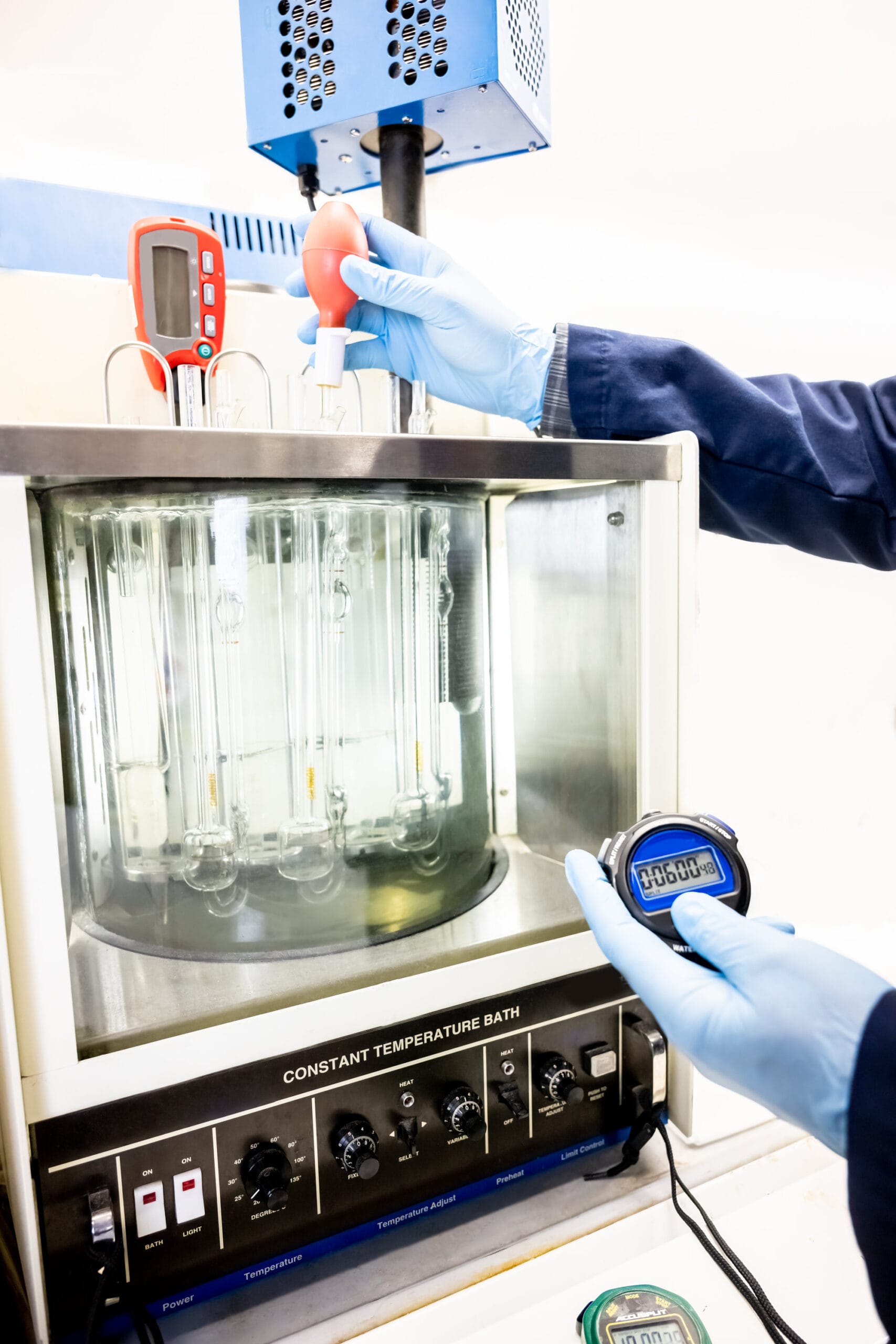
Wet Chemistry
Dilute Solution Viscosity (DSV) is a key test method for the analysis of a polymer’s molecular weight
Measuring viscosity of a polymer requires dissolving the polymer within a solvent and then assessing the time required to flow through a viscometer. Once the flowtime is measured there are many options for calculations which include: Relative Viscosity, Reduced Viscosity, Inherent Viscosity, and Intrinsic Viscosity.
This data can be used for lot release testing of medical devices or for the failure analysis of parts where molecular weight degradation is anticipated. A difference in the flowtime of a “good” vs “bad” part would indicate a change in molecular weight which results in a change in the physical properties of the part. Since the sample size for dilute solution viscosity is typically less than 0.1 g, it is the preferred method when material degradation is anticipated. Other methods include GPC which is more costly but provides significantly more data or melt flow index which requires 80-100 g of material and grinding of the failed part.
If you have questions about viscometry or polymer testing contact one of our experts.
Approaches
By measuring the flow time of a polymer solution through a precision capillary, we can measure the viscosity of that solution. This is related to molecular weight of the polymer.
Dilute Solution Viscosity is applicable to any soluble polymer but commonly used for testing:
- Polyethylene (PE)
- Polypropylene (PP)
- Poly(ethylene Terephthalate) (PET)
- Poly(lactide) and Poly(glycolide) (PLA, PGA, PLGA)
- Polyether ether ketone (PEEK)
- Nylon (polyamide)
Methods
Methods utilized or commonly referenced for custom polymer testing may include:
- ASTM D2857 Standard Practice for Dilute Solution Viscosity of Polymers
- ASTM D4603 Standard Test Method for Determining Inherent Viscosity of Poly(Ethylene Terephthalate) (PET) by Glass Capillary Viscometer
- ASTM D789 Standard Test Method for Determination of Relative Viscosity of Concentrated Polyamide (PA) Solutions
- ASTM D1243 Standard Test Method for Dilute Solution Viscosity of Vinyl Chloride Polymers
- ASTM D1601 Standard Test Method for Dilute Solution Viscosity of Ethylene Polymers
- ISO 1628 Determination of the Viscosity of Polymers in Dilute Solution Using Capillary Viscometers
- ISO 307 Determination of Viscosity Number for Polyamides
Sample Considerations
The sample must be soluble in a solvent and must be free of particles or fillers. If those are present, we can use ultracentrifugation or filtration to remove them and ensure they don’t interfere with the measurement. If a particle or filler is present at a high concentration, one option is to use TGA analysis to determine the wt% filler of the sample so it be accounted for.
Because these measurements are done using dilute polymer solutions, approximately 0.1 grams or less of polymer sample is needed.
For polymer dissolution, we use a variety of common organic solvents as well as hazardous solvents like hexafluoroisopropanol (HFIP), tetrachlorobenzene, trichloroethylene, and strong acids like nitric or sulfuric.
Contact an expert today to discuss sample preparation guidelines for your polymer testing requirements.
Experience
Dilute solution viscosity is applied in our lab daily to a very broad range of polymers and products. Some examples include:
- Ultrahigh molecular weight polyethylene (UHMWPE)
- Lot release testing for bioabsorbable polymers (Poly(lactide), Poly(glycolide), Poly(caprolactone)
- Molecular weight monitoring of bioabsorbable polymers during an aging study
- Polyethylene glycol (PEG)Poly(hydroxyalkanoate) (PHA)
- Glass-filled polyamides (Nylon) for failure analysis
- Polyethylene terephthalate (PET) for failure analysis or lot release testing for manufacturing
